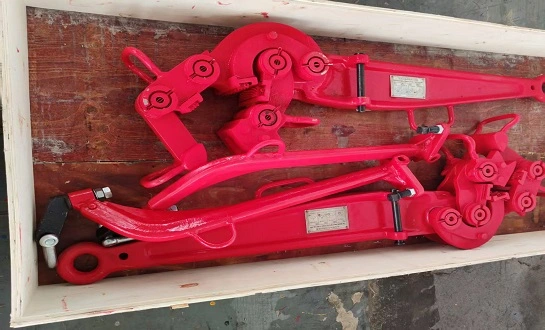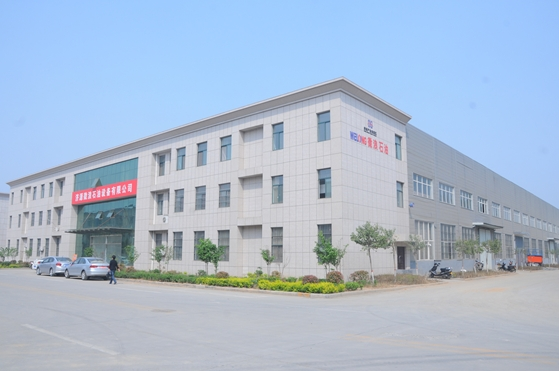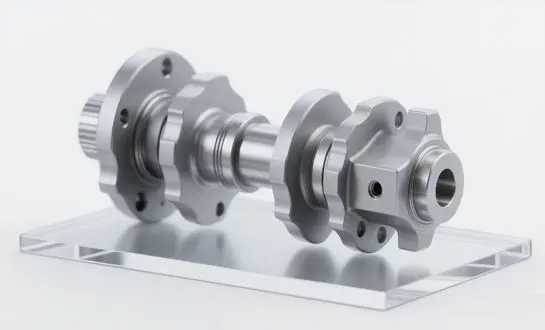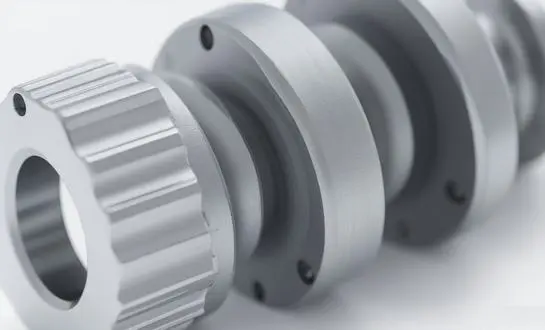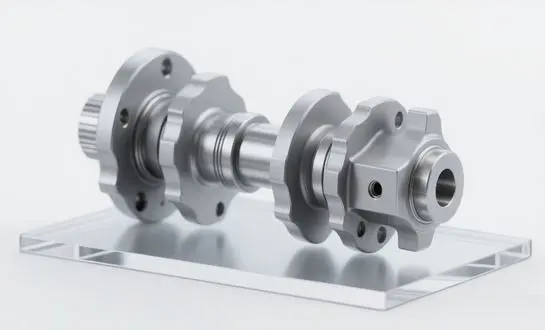This type of tongs, which is also known as hand tongs, has been used for a long time. These tools are popular because they work well, don't cost a lot, and are easy to use. With power tools, on the other hand, work gets done faster and with less effort from workers. You should think about the job's size, your budget, and your real wants in order to make the best choice. Let's go over the specifics of this choice to help you make the best one for your drilling business.
Manual vs. Power Tongs: Key Differences Explained
Operational Mechanism
To connect or detach pipes with manual tongs, one must use their muscles to grasp and turn the pipes. A handle, some jaws, and a way to secure them are the usual components. Although physically exerting power is required to use these gadgets, the resulting fine control is well worth the effort.
On the other hand, power tongs are able to provide the necessary torque thanks to their hydraulic or pneumatic systems. Especially in high-volume processes, this automation may boost overall efficiency by reducing the physical effort needed by humans.
Torque Capacity
The torque capacity of manual tongs is limited by human strength and leverage. While skilled operators can achieve significant torque, it's generally lower than what power tongs can produce. This makes manual tongs suitable for smaller diameter pipes and lower torque applications.
Power tongs excel in high-torque situations, making them ideal for larger diameter pipes and applications requiring precise torque control. They can consistently deliver the exact torque needed, reducing the risk of over-tightening or under-tightening connections.
Portability and Versatility
The convenience of being able to take manual tongs anywhere is undeniable. Lightweight and portable, these tools are ideal for usage in confined areas that would be inaccessible to heavier machinery. Because of this, they are ideal for tiny rigs, maintenance jobs, or areas with restricted access.
Though they are more powerful, power tongs are cumbersome and unwieldy. Because of the supplementary tools needed for operation, such as hydraulic power units, their mobility may be restricted. But they're more adaptable since they can handle a wider variety of pipe diameters and torque levels.
5 Factors to Consider When Selecting Tongs
1. Operational Scale
The scale of your operations plays a crucial role in determining whether manual tongs or power tongs are more suitable. For smaller projects or maintenance tasks, manual tongs often provide the flexibility and cost-effectiveness needed. Their simplicity allows for quick deployment and easy use in various situations.
However, for large-scale drilling operations or projects involving frequent pipe connections, power tongs may be the better choice. Their ability to handle high volumes efficiently can significantly reduce operation time and improve overall productivity.
2. Budget Constraints
Whenever choosing new machinery, it's important to keep costs in mind. For startups or businesses on a smaller budget, manual tongs are a great alternative because to their inexpensive initial cost and low maintenance needs.
Although power tongs are more costly initially, they might end up saving money in the long run because to their enhanced efficiency and decreased labour expenses. Both the purchase price and the possible return on investment over time should be considered when analysing the financial element.
3. Workforce Considerations
When choosing a manual tongs manufacturer, you should take into account how much physical effort will be required to use the tool. For proper and safe use, these instruments need operators with strength and expertise. They might be a great option if your employees have prior expertise and physical capacity with manual tongs.
When it comes to worker safety and longevity, power tongs may be a lifesaver since they decrease operator strain. Plus, they're easier to run and don't need as much specialised knowledge, so you can hire more people from a wider pool of competent candidates.
4. Safety Requirements
When working in the oilfield, safety must always come first. Even though manual tongs have been around for a long time and have never caused any harm, using them correctly is essential. In delicate circumstances where dexterity and accuracy are paramount, the direct control that comes with manual operation may be very advantageous.
Accidents caused by human mistake may be reduced with power tongs because to their improved safety features, such as automated shutoffs and accurate torque control. On the other hand, their hydraulic or pneumatic systems bring additional safety concerns.
5. Operational Environment
Think about where the tongs will be put to use. When dealing with places with intermittent or nonexistent electricity, manual tongs are the way to go. Because of their straightforward construction, they are less likely to be damaged by the elements than more intricate apparatus.
When it's best to keep humans out of dangerous situations, power tongs could be the way to go. In really harsh weather, when operating a manual machine might be risky or difficult, they can be even more efficient.
Maximizing Efficiency: Matching Tongs to Your Workflow
Analyzing Your Current Process
To determine whether manual tongs or power tongs will maximize your efficiency, start by analyzing your current workflow. Consider factors such as:
- The average number of connections made per day
- The typical pipe sizes and weights you work with
- The skill level and physical capabilities of your workforce
- Any bottlenecks or inefficiencies in your current process
Integrating Tongs into Your Operations
Once you've chosen between manual tongs and power tongs, consider how to best integrate them into your existing operations. This may involve:
- Redesigning your workflow to accommodate the new equipment
- Providing training for operators on proper use and safety procedures
- Establishing maintenance schedules to ensure optimal performance
- Implementing quality control measures to monitor connection integrity
Hybrid Approaches
In some cases, a combination of manual tongs and power tongs may offer the best solution. For example, you might use power tongs for high-volume, standard operations while keeping manual tongs on hand for specialized tasks or as a backup. This hybrid approach can provide the benefits of both types while mitigating their individual limitations.
Conclusion
Consider your operating objectives, finances, and people abilities when choosing between power tongs and manual tongs. While manual tongs have the advantages of being cheaper, easier to carry, and more handy, electric tongs are more efficient and more comfortable for workers.
Make a well-informed choice that optimises your operations and contributes to long-term success by carefully considering the elements mentioned in this article and analysing your present workflow. It is crucial to reevaluate your equipment requirements on a regular basis since the best option may change as your organisation develops and adapts.
Enhance Your Operations with Welong's Manual Tongs
Are you prepared to maximise your oilfield operations with superior manual tongs? To find a reliable Manual Tongs manufacturer, your search ends with Welong. Our extensive inventory of manual tongs is a result of our 20+ years of expertise in the field. Each and every tong we make is tested and approved to meet or exceed industry requirements for longevity and functionality by means of our demanding quality control procedures.
In terms of reliability and timely delivery, Welong regards your business as paramount. We have streamlined our production and shipping processes to ensure that your equipment will be delivered promptly. Types SDD, DB, SB, and others are available, and our knowledgeable team is ready to assist you in selecting the most suitable manual tong version for your process.
Don't let equipment limitations hold back your operations. Contact Welong today at oiltools15@welongpost.com to discuss how our manual tongs can enhance your efficiency and reliability in the field.
References
1. Johnson, R. (2024). "Comparative Analysis of Manual and Power Tongs in Modern Oilfield Operations." Journal of Petroleum Technology, 76(3), 45-52.
2. Smith, A. & Brown, T. (2023). "Safety Considerations in Tong Selection for Drilling Operations." SPE Drilling & Completion, 38(2), 189-201.
3. Zhang, L. et al. (2025). "Efficiency Gains from Power Tong Implementation: A Case Study." Offshore Technology Conference Proceedings, OTC-12345-MS.
4. Anderson, K. (2024). "Manual Tongs: Enduring Tools in an Age of Automation." Oilfield Review, 35(4), 62-69.
5. Thompson, E. & Davis, M. (2023). "Cost-Benefit Analysis of Tong Types in Various Operational Scales." SPE Economics & Management, 15(1), 32-41.
6. Lee, S. (2025). "Ergonomic Considerations in Oilfield Tool Selection: Focus on Tongs." Journal of Occupational Ergonomics, 11(2), 78-90.
